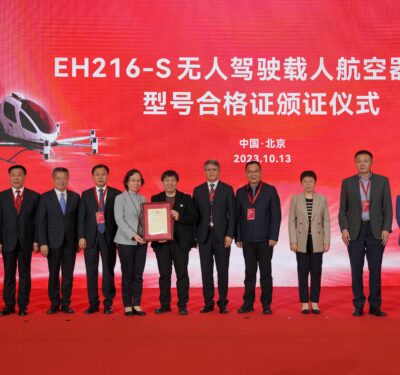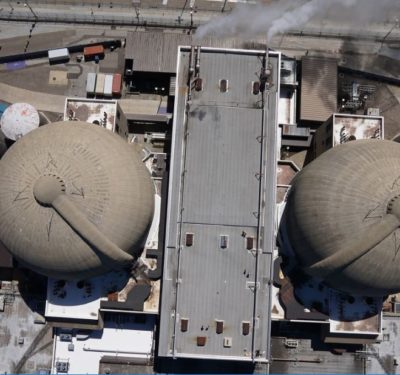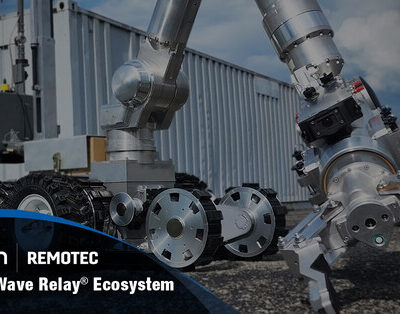Policy and regulatory advances are being achieved through effective collaboration between industry and government stakeholders at national, regional and local levels.

Drones and Advanced Air Mobility aircraft are unlocking significant benefits in both safety and technology leadership, positioning these sectors of aviation at a pivotal moment that will unlock tremendous economic activity and workforce opportunities.
AUVSI’s goal is to help kickstart the flywheel and get things moving faster towards integration, and policy engagement is a key pillar in our work to address challenges before the industry and open new opportunities.
BVLOS Rulemaking Will Unlock Scalability and Safety
AUVSI led the way on Part 107 rulemaking and implementation, and now we are shaping the future with Part 108, Beyond Visual Line of Sight (BVLOS) rulemaking. We commend the passage into law of a bipartisan, multiyear FAA Reauthorization bill, and now we are actively working in support of implementation of the law’s directives. This includes the Congressional requirements on BVLOS rulemaking. Timely issuance of a draft rule will showcase the path forward for safely unlocking scalability of high-value areas, including drone delivery, inspection, agriculture, and Drones as a First Responder and public safety operations.
As I testified twice before Congress in recent Congressional hearings, the drone industry is anxiously awaiting the draft BVLOS rule. At this stage, forward movement and issuance of the draft rule is very important to keep the process moving ahead.
At the 2024 FAA Drone and AAM Symposium, co-hosted by the Federal Aviation Administration and AUVSI, FAA Deputy Administrator Katie Thomson announced that industry should expect to see a draft BVLOS rule released around the end of the year. Then, there will be time perfecting the rule during the required review process of the draft.
Congress allowed for 16 months between the draft rule and the final rule. During that time, it will be vitally important for industry to speak together to help perfect the rule. Our industry will want to give the FAA the feedback, information, and data needed to turn the draft into a final rule.
While the rulemaking is underway, AUVSI is encouraging the FAA to continue the ongoing issuing of waivers and exemptions to enable risk-based and performance-based BVLOS operations. Congress granted the FAA additional flexibility for approving waivers, which we hope to see put into action soon to keep the industry moving forward. This is essential to unlocking the positive economic impact of drone operations, including the corresponding growth in drone-related jobs and the advancement of aviation safety.
AUVSI thanks the FAA for making significant progress within the last year – more progress than many previous years combined. The Agency’s issuance of risk-based waivers and exemptions are safely laying the groundwork for the 108 BVLOS rule.
Forward Movement for the AAM Industry
The FAA Reauthorization Act of 2024 also includes important directives regarding the AAM industry broadly, and operations of powered lift aircraft specifically, which will help to meaningfully move the eVTOL segment of the AAM industry forward.
AUVSI looks forward to FAA issuing the Powered-Lift Special Federal Aviation Regulation (SFAR) later this year, which takes into consideration industry feedback on the initial approach the FAA took in the NPRM. We know the rule is at the Office of Management and Budget (OMB) for review.
We appreciate the FAA moving the powered lift SFAR through the rule making process. Being in review at OMB brings us closer to knowing if this revised rule will right-size safety and meet the needs of industry and the public. It is essential for the future of U.S. aviation global leadership that the forthcoming rule is performance-based and safety-based and considers the feedback of industry to correct the significant shortcomings of the draft rule.
The FAA Reauthorization Act of 2024 also creates a pilot program for Electric Aircraft Charging Infrastructure. This would give airports critical tools to plan for the future, including energy assessments and installation of interoperable charging infrastructure for electric aviation. More than 20 airports already have charging infrastructure that supports electric aviation, and the pilot program would help broaden that on-airport network to support early operations of Advanced Air Mobility. This is an area with significant opportunity for collaboration between industry, airports, federal agencies, and other stakeholders.
State, Local, and Tribal Policy Engagement
AUVSI is also heartened that the FAA Reauthorization Act of 2024 authorizes a grant program for local, state, and tribal governments to purchase and use drones for critical infrastructure inspections and construction projects. Grant programs like this will bolster investment in the drone industry and provide tangible benefits for infrastructure resilience and workforce development.
Thinking about state, local, and tribal governments, we know that their engagement in policy and integration is critical to achieving Connected Communities, especially from an infrastructure and data-sharing perspective.
Through our Drone Prepared and AAM Prepared state and local initiatives, AUVSI is continually seeking opportunities to engage with and educate local decision-makers, planners, and others responsible for integration into communities. I’m excited to share that multiple states have passed laws to support our industries and are now “Drone Prepared” or “AAM Prepared.”
Look Ahead: Movement Over Motion
Throughout the 2024 FAA Drone and AAM Symposium, I heard discussions about where the uncrewed systems industry will go in the years ahead and what will change. While attempting to predict the future is a fraught task, the discussions were consistently interesting and optimistic. Not a single person was negative about the future of the drone or AAM industry.
Certainly, there is recognition that the road ahead is challenging, and that there is significant business risk ahead, but not a single person predicted that advanced aviation would not succeed. There is complete agreement that drones and AAM will be transformational for aviation safety and for how we move people and goods, conduct critical missions like public safety and infrastructure inspection, and more.
This was obviously very encouraging, but of course, hope is not a strategy. Our industries must always prioritize forward movement over motion. We need optimism, but we also need a strategy to see real movement. We then need to execute on that strategy and shift tactics when dynamics change, which they will.
AUVSI is here to help lead the way toward progress, to be the voice for the drone and AAM industries, and to ensure that our collective vision for a safer, more efficient, and more equitable aviation future becomes a successful reality.
Michael Robbins is President & Chief Executive Officer at the Association for Uncrewed Vehicle Systems International (AUVSI), the world’s largest trade association for uncrewed systems, autonomy and robotics, in both the commercial and defense sectors. He joined AUVSI in 2020 and previously served as Chief Advocacy Officer and an Executive Vice President.






